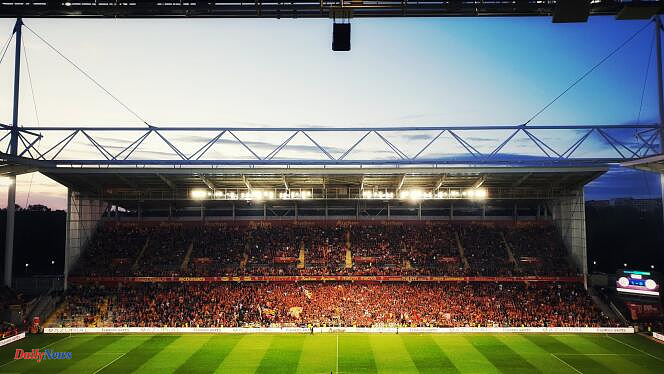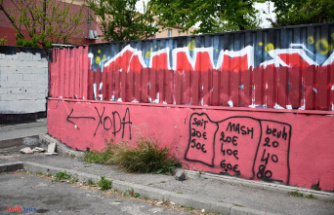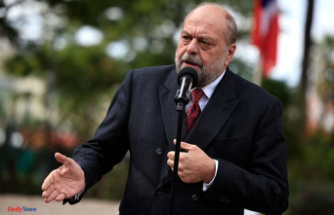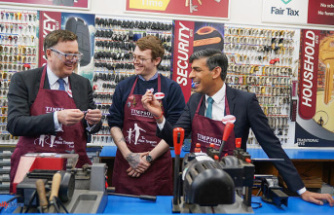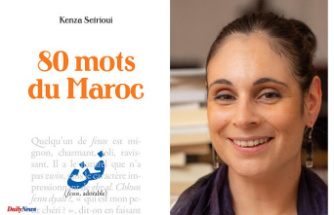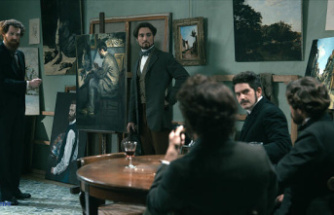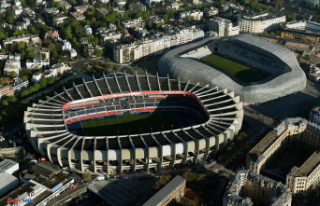A culture, almost a religion. “Bollaert is our temple. I fell into the pot when I was very little, in 1963. I went there with my father, my grandfather, my uncles, all underground miners. On Sunday, after the trifecta, we met to eat at grandpa and grandma's, and in the afternoon, it was football. The weekly release. We continue thinking about our ancestors, the miners, and we pass it on to our young people. » Like Muriel, they know the words. Those of Pierre Bachelet’s song – “In the North, it was the settlements. The earth was the coal…” –, which has become the unofficial anthem of the Racing Club de Lens for around twenty years. And those of La Lensoise, variant of La Marseillaise – “The Blood and Gold standard is raised, hear us, the supporters…” –, the official anthem.
More than a stadium, Bollaert-Delelis, 38,223 seats, is the unifying element of a town of some 30,000 inhabitants "razed to the ground at the end of the First World War", recalls Marion Fontaine, professor at the center history of Sciences Po, whose research work focuses on the mining world. “It’s a city that no longer has anything from before the 1920s. It suffered this first break from the bombings, then a second in the 1960s-1970s with the decline of the mining basin,” she analyzes . The stadium therefore creates a story.
“It links the present to the future as well as the past.”
Built in 1932 by the chief engineer of the Lens Mines Company, Bollaert is a so-called “English-style” stadium, with four independent stands which encircle the lawn and four empty corners. To host Euro 2016 matches, it was renovated, but not transformed. Even if today it sports a refined white envelope echoing the architecture of the Louvre-Lens.
New recruits from elsewhere should not consider escaping it. Gervais Martel, president of the club for twenty-eight years – he left office in 2017 – had set up a meeting between the minors and the club's players so that the latter knew who they were working for on the pitch. Arnaud Pouille, the current leader, has maintained this tradition. “Our team has not always been educated in the values of RC Lens,” he explains. It is important to teach the players very quickly where they are going because the supporters are quite sensitive about their history. »
Sensitive and numerous. Extremely rare in the world of professional football, the Racing Club de Lens has no less than fifty-two supporters' associations, officially recognized by the club. And it is also a heritage of local history. “Here, each pit had its supporters association. Each gathered its members in its café. It created social bonds,” says Arnaud Goubelle. Within the Racing Club de Lens, he is responsible for coordinating the three popular stands which guarantee the atmosphere of celebration and unique fervor during home matches, but also on the road. “In Bollaert, that represents 12,000 cheap, standing seats, or about a third of the stadium. For fifty years, it has been the historic Tony Marek platform that has created the atmosphere, and now other very strong platforms are trying to take up the codes and overall songs. »
Among the other flagship groups, the Red Tigers, with around eight hundred members, have assigned themselves a real mission within the club, but not only that. “We consider ourselves a bit like trade unionists,” assures Pierre Revillon, one of the association’s leaders. When we need to defend certain values, or interact with the club in a constructive way, we don’t hesitate to step up to the plate. We see ourselves as a social actor in the city, and more generally in the mining area. »
To preserve this virtuous balance, Arnaud Pouille is even considering having the Bollaert stadium bought by RC Lens, an operation which is almost never done in France, where sports venues remain mainly public facilities. “The stadiums and clubs are considered real monuments,” judges the manager of Racing. These are the last places of social contact in the cities. So, for us, it would make sense for Bollaert to be part of the heritage of a club rather than a community which can make its operation unstable. »
Another ongoing reflection is that of the place of supporters in the club's shareholding to give them an official place within the organization. “Our supporters have a real economic, pragmatic vision of things,” rejoices Arnaud Pouille. We are two blocks of an ecosystem which has in common the love of the club and its ambition, but which also defend the interests of each one. »
Season 3 of the “Archi interesting” podcast is produced on the occasion of the exhibition “Once upon a time the stadiums”, presented from March 20 to September 16 at the Cité de l’architecture et du patrimoine, in Paris.

